#tigris euphrates eden
Explore tagged Tumblr posts
Text
As knowledge of the world grew, locating the Garden of Eden became problematic. Explorers and conquerors had traversed the whole world, and they hadn’t come across any magical gardens. But mapmakers still did their best, using obscure clues from the Bible to try to place the garden.
Most maps put Eden in modern-day Iraq, somewhere in the vicinity of Babel and the Tigris and Euphrates Rivers.
This map from 1700 gives the supposed location of paradise:

Just take a right at Babel, follow the wiggly river, and if you’ve hit the Persian Gulf, you’ve gone too far:

{Buy me a coffee} {WHF} {Medium} {Looking Through the Past}
Much more on Eden in maps and art here:
110 notes
·
View notes
Text
37 Wilderness Interaction
They've looped back into Vertin's soul number, 0, being the origin of everything and connection it with her Suitcase. So many interaction reinforce the fact the Islands are tied to Vertin's influence. The environment is unnatural and everyone admits that, yet they also comment on how calming the Wilderness is.
Vertin's power over this place is an open secret.
The Suitcase is often referred to as an "ark" that travels through time. Following that train of thought, I'd like to think the Wilderness is similar to the Garden of Eden.
A lush, fertile paradise with every kind of tree that is "pleasant to the sight and good for food." There are rivers throughout the Wilderness too. (characters mention them in dialogue). Biblically, the garden is watered by a river that splits into four branches—Pishon, Gihon, Tigris, and Euphrates.
That makes me wonder if there's something in the Suitcase that could lead to bad news too. Like the Serpent and the Apple. Or will someone sneak in through the Spinning Wheel and create chaos?
Or is Vertin going to be the origin of bad things to come? Will she be the catalyst in her own Suitcase? This is mostly me yapping though...
32 notes
·
View notes
Photo

Garden of Eden
The Garden of Eden is the biblical earthly paradise created by God to be inhabited by his first human creation - Adam and Eve. Some claim that the name “Eden” derives from the Akkadian term edinu, which means 'plain'. In the biblical tradition, the garden is often alluded to by the biblical authors as a luxuriant place, which is why it is sometimes called the “Garden of God.” However, it is the biblical definition of the garden that is our concern here. Adam was the first man created by God in his image. After God saw the loneliness of Adam as "not good," God caused a deep sleep on Adam and created Eve (the first woman) out of Adam's rib as his helper (Genesis 2:20-23). To properly understand what the garden is to the narrator of Genesis, it is important to discern its location, the characters playing roles in it and what took place in it. All these contribute to our understanding of the biblical definition of the “Garden of Eden.”
The Eden narrative is narrated in the Bible's book of Genesis 2:4b-3: 24, which places the garden at the east side of Eden. Commonly, translations have the “Garden of Eden” with the construct element “of,” but the Hebrew text has 'gan-beeden', which is not in the construct form, and that the preposition “be” in 'beeden' is to be translated as “in.” Therefore, it is grammatically incorrect to translate 'gan-beeden' as “Garden of Eden,” but the “Garden in Eden.” The actual location of Eden is disputed amongst scholars, but a number of them have concluded that the garden is an extraterrestrial place – where the gods resided. The water from the garden was the water-source for the two great rivers: Tigris and Euphrates, which are well-known in ancient Mesopotamia for the production of irrigation systems in the surrounding area. Its location then should be placed somewhere in Mesopotamia.
Location & Features
The description of the garden in Genesis 2:10-14 states that the water from Eden watered four important areas: Pishon, which flows into the land of Havilah; Gihon, which flows into the land of Cush; Tigris, which flows into the eastern side of Assyria; and the fourth is Euphrates. The garden is also said to have “every tree that is pleasant to the sight and good for food.” Yet, two trees are singled out: the “Tree of Life” in the middle of the garden and the “Tree of Knowledge of good and evil.” However, the Genesis account is inconsistent at some point, Genesis 2:8-9; 3:1-3 has both trees in the midst of the garden, whereas Genesis 3:22-24 gives the possibility that both trees were planted on the east side of the garden where Adam was originally placed.
Even more, the description of the garden in the Genesis account is not identical with other biblical texts alluding to the garden. For example, in Ezekiel 28, the luxuriant materials found in the garden are not mentioned in Genesis 2:4b-3:24. For some of these reasons, the concept of a “garden” of a god(s) was a very common metaphor in the ancient Near East of where the god(s) resided. For the narrator of Genesis, the “Garden in Eden” was imaginatively constructed for an etiological (origin or cause of things) purpose, not as a divine residence, but of the first man and woman on earth – Adam and Eve. As generally accepted in modern scholarship, Genesis 1-11 is labeled as the “Primeval History,” which includes mythologies and legends that were very common not just in Israel, but throughout the ancient Near East. These myths and legends are not Israelite in origin but were adapted by the biblical writers for either polemical or rhetorical purposes.
Some of the crucial questions readers ought to ask to properly discern the “Garden in Eden” are: What is the purpose of the Eden narrative in the book of Genesis? What did the narrator seek to achieve? Importantly, to reach this goal, readers should not treat the “Garden in Eden” exclusively from the characters playing roles in the narrative, such as God, Adam, Eve, the serpent, the singled out trees: tree of life and the tree of knowledge of good and evil, and especially the narrator's overall purpose. To focus exclusively on the "garden" without acknowledging these characters would only disrupt the plot of the narrative.
Continue reading...
29 notes
·
View notes
Text
The theory of Lesley and Maud (the first part)

1.Lesley. Is Lesley the prototype or spirit of the Tigris River? The Tigris River is one of the most famous and significant in the world. It flows through several countries in the Middle East. The Tigris and Euphrates are biblical rivers. From the Bible, you can learn that the Garden of Eden was located between the Tigris and Euphrates. The Tigris River (from ancient Sumerian - fast water) had a fast flow, unlike the Euphrates - a smooth flow. For this reason, the Tigris River was of great importance in ancient times in terms of transport and trade. What is not an international means of communication, like the company Lesley works for?
2.Maud. How can the Maud be conceptually related to the Tigris River? Matelda (abbreviated Maud) is a character in Dante's Divine Comedy. Dante meets her when he visits the Garden of Eden. She stands near the Lethe River and collects flowers. Moreover, in some texts it is found that the Tigris and Euphrates rivers flowed inside the Garden of Eden and were respectively the rivers of Lethe and Eunoe. Matelda acts as a mentor, she knows the answers to many questions and encourages Dante to ask her questions. Secondly, she is a priestess, she offers the soul to drink water first from the Lethe and then Eunoe (repentance and healing).
3.Symbols and hints. On the bedside table of the Maud are: -the apple (of Eden) -nightingale (symbol of love) -a glass of water (what Matelda brings to the souls in the garden) -books and glasses (symbol of knowledge) -flowers on the bed linen (like Dante, we first meet her near the Tiger and in flowers) -the painting on the wall (it is poorly visible, but obviously has African or Oriental motifs)
4.Another divine couple. There is a huge mirror opposite the bed, behind which there is darkness and no wall. I assume, Lesley and Maud are the prototypes not only of the Tiger and Matelda, but also of the Nile River and the goddess Maat. The Nile River is consonant with the name Neil Gaiman. Maat is the egyptian goddess of justice and divine law (about this and not only in more detail in the second part). Here I will once again mark the books on the bedside table. The bottom book is blue like a river. And on top there is a red and white book. Maat is often depicted in red and white clothes.
20 notes
·
View notes
Text
LEGACY HISTORY CHALLENGE - AGRICULTURAL AGE (NEOLITHIC AND EARLY SIMVILIZATION)
*Note: English isn't my mother language and I’m not an expert in idiomatic expression. So if you find any errors or something weird, please forgive me and let me know on “ask me” if you want.
Tradução para Português aqui.

INTRODUCTION
Around 12,000 years ago, geological and astronomical events such as the younger Dryas impact caused profound climate changes, leading to global warming, rising sea levels and enabling the development of agriculture. Man ceased to be a hunter/gatherer and began to settle in settlements, becoming sedentary. The first cities, ceramics, the calendar, coins (initially clay chips) and later, writing appeared.
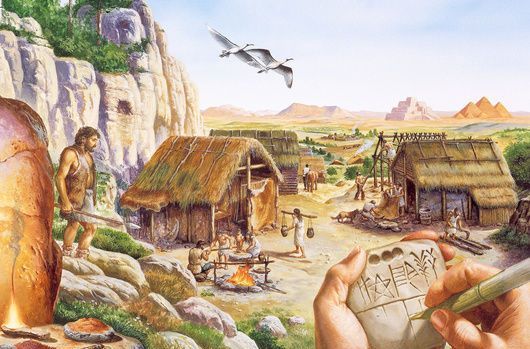
The oldest city in the world is believed to be Çatal Huyuk in Anatolia (Turkey) dating to 7,100 BC, although older settlements such as Tell Abu Hureyra already denote the existence of Pre-Pottery Neolithic communities of Natufian culture in the Levant region and northern Mesopotamia between 13,000 and 9,000 years ago. These were probably seasonal settlements of semi-nomadic hunter-gatherer groups who practiced rudimentary agriculture and domestication of animals, while Çatal Huyuk was a more sophisticated town of around 10 thousand inhabitants, with a sewerage and rainwater channeling system. Their houses were about 25 m² (269,0977 ft²) in size and were built adjacent to each other with openings in the roof, accessed by stairs. The city had no walls, sidewalks, streets, market squares or cemeteries. Their dead were buried under the floors of houses. Art was very important to the local population. Mural paintings and several animal sculptures were found, mainly bulls and women, probable symbols of fertility. One factor that may have favored the establishment of a matriarchal culture is the city's location on the migration route between northern Mesopotamia and the European continent. However, as men spent more time at home and cities emerged, social relations began to change, forming the basis for the patriarchal society that was established since antiquity. The man's space was defined as public, while the woman's became private. Marriages began to be frequent and women became a bargaining chip.

In Anatolia, the first major constructions also emerged, the Temple of Gobekli Tepe, dating from 9,500 BC, and astro-religion (a set of mythological beliefs based on the observation of the sky and constellations). It is speculated that there was a religious belief at that time, which originated from syncretism all the gods and myths of antiquity. In this way, there are parallels between Ea and Chronos, Zeus and Thor, Ra and Apollo, Ishtar, Astarte and Aphrodite, Hermes and Thoth, Enki/Enlil and God/Devil, Jesus Christ and Krishna and several narratives that talk about a great flood in different cultures.

It was formerly believed that agriculture spread from three centers of expansion: Mesopotamia, Egypt, and China. Today, Harapa (India), Central America and New Guinea are added. The earliest known civilization flourished in the fertile crescent between the Tigris and Euphrates rivers, where, around 5500 BC, the Ubaid culture developed through the fusion of the three cultures: Samarra (fisher-hunter), Hassuna (practicing irrigated agriculture) and Halef (shepherd potter nomads), later becoming Sumer. The Ubaidians founded the city of Eridu in 5400 BC in southern Mesopotamia and are probably responsible for the oldest metallurgical processes known from copper smelting. Genesis also mentions that the Garden of Eden would be located next to a river that would divide into four, two of them identified as Tigris and Euphrates. This could mean that there was a place of peace and tranquility in this region attributed by the Hebrews as the cradle of humanity. New research has also found submerged ruins that suggest the existence of even older civilizations in Duarca (India) and Yonaguni (Japan), but little is known about these archaeological remains.

The rules I wrote are for the Neolithic and early pre-Sumerian civilization in Mesopotamia because of the archaeological records. I tried to have a base that had sources to research or at least a speculation of how people lived. Another point is that I wanted to diversify the ethnic groups. It is worth remembering that Prehistory in Mesopotamia ends with the invention of writing around 3500 BC, while in Europe it lasts longer. Stonehenge, for example, dates to 3100 BC to 2000 BC (about 6 millennia after Gobekli Tepe).
Being based in Mesopotamia also means some problems. Doesn't have custom content for Sumeria (I'll need to make). I am inspired by Morbid Gamer's Ultimate Decades Challenge and playing 10 thousand years considering every 4 Sim days as 1 human year would be crazy. So I'll adopt the human-based Sims lifespan only when starting historical records. Prior to these records, the Bible and the Sumerian King List suggest that men lived for hundreds of years. So, consider that your Prehistoric Sims lived thousands of years and ancient Sims lived longer than current Sims. I have established each Sim day as 1 year of Antiquity. The amount of generations after completing the basic tasks of this Age is optional and you can also disregard this calendar suggestion.
RULES
1 - Gradual progression:
The main rule of this Era is:
1.1 - Changes should happen slowly, gradually and look like progress is being made. No more sleeping in a cave with furs one day and the next day in a brick shed with elaborate clothing and jewelry. Let your Sims conquer things slowly.
2 - Heir, Matrimony, Maternity and Primogeniture
2.1 - The Sim that starts this Era would be the youngest after the Founding Matriarch of Prehistory completed the life cycle. If you've played multiple generations in Prehistory, you can choose another descendant, as long as he's of the Matriarch's blood lineage.
2.2 - The first heir can be a woman, but the next ones will all be men.
2.3 - If you have The Sims 4 Eco Lifestyle expansion pack, the "Free Love" action plan is prohibited.
2.4 - Female sims must marry young (teens in the game). Yes, they can marry with elders.
2.5 - It would be nice for men to marry young, but it's not mandatory.
2.6 - Beauty is not fundamental to marriage, fertility yes. Young women with wide hips are preferred. But if your Sim doesn't find their spouse attractive (Wicked Whims or Wonderfull Whims attractiveness system), you can marry them anyway.
2.7 - Marriages can occur by exchanges. I'm not considering the dowry, but the exchange for some more expensive item you need or want.
2.8 - Your Sim can have more than one wife. This rule is valid for women also until the day marked as 2300 BC in the Sim Calendar (see item 4). Polyandry was outlawed under the penalty of stoning around 2300 BC in Sumer.
2.9 - In Simvilization, women must have aspirations of being a Superparent or a Big Happy Family and being mothers. They can have other aspirations and do business with other Sims (through the store or sales table) only when widowed or old (adult), in the absence of a husband.
2.10 Every time a Sim gets married (male or female) roll a D100. If you roll 100, that Sim is infertile and will never be able to have children. Check the option in the CAS so that he cannot have children.
2.11 - If the Sim's wife is infertile he cannot get a divorce.
2.12 - If you use Wicked Whims, Wonderfull Whims or Pregnancy Overhaul you cannot use contraception. I didn't adopt the rule of always “try for a baby” instead of “woo hoo” because surely there must have been methods of preventing pregnancy in the old days, although not as effective as the modern ones.
2.13 - Homosexual relationships gradually begin to be viewed with prejudice. These relationships must be hidden. I'm not sure if this is true for all of Sumer, but it was true for the Hebrews (Bible). So the foundations must have started with marriage.
2.14 - If your inheriting Sim dies, the Legacy passes to the firstborn child.
2.15 - If the heir's eldest son dies, the Legacy passes to the next eldest son.
2.16 - If all of the heir's sons die, the Legacy passes to the closest male Sim.
2.17 - If all male Sims descended from the Matriarch die, the Legacy passes to the eldest daughter or closest female relative, assuming the husband will plan her estate. Upon the death of that female Sim, the Legacy passes to her firstborn male child. If the husband has other children, with another woman, these are not considered, as they are not descendants of the Matriarch.
2.18 - Use rules 2.16 and 2.17 with wisely. A female Sim close to the main family is still more important than a male Sim descended from the Matriarch in a distant world. If you don't have contact with the male Sim's family branch, Legacy passes to the female Sim.
2.19 - If your legacy Sim dies without completing an Age task, the next Sim who takes up the Legacy must carry on that task. The previous heir's skill progression doesn't count. If the heir dies with gardening level 9 and the new one has only 2, you will have all the skill progression effort again.
2.20 - The second son or another male Sim can compete with the heir Sim for the Legacy. A fight must ensue. The loser dies or is exiled. The winner must continue the tasks, applying rule 2.19.
2.21 - I'm not considering the regent yet. In some cases, when the mother is a widow and the heir is a child, a regent (the uncle or second husband of mother) may be appointed to complete the tasks of the Age. But I don't know if this is suitable for this Age or just Roman Empire and Middle Ages. It is more likely that this wasn't important until there was a great accumulation of simoleons. Perhaps, if your family becomes exceptionally rich… Use this idea wisely.
3 - Aspiration and Sim Skills - Agriculture Expansion, Object Crafting and Animal Taming
3.1 - Your Heir Sim must have the Freelance Botanist aspiration and the Super Green Thumb reward trait to complete the Agricultural Age.
3.2 - Your Heir Sim must reach level 10 in Gardening skill.
3.3 - Complete the Harvested Interest achievement.
3.4 - Have a plantation with all plants in your world. It must not be an organized plantation. Just a bunch of plants that grow where you planted them and shouldn't be moved in build mode. You can organize the crops after completing level 10 gardening.
3.5 - Plants with insects cannot be cared for and must die. No pesticides.
3.6 - It is not allowed to buy seeds by the gardener. No buying on phone and computer too, please.
3.7 - Your Sim can travel to another world to gather herbs, fruits and vegetables, but he must stay outside for days with his campfire and tent. Only for worlds with similar climates. If your Sim lives in Willow Creek, he can travel to Newcrest, Windembug, and Henford-on-Bagley. If he lives in Oasis Springs he can travel to Del Sol Valley and Sulani. Granitte Falls are equivalent to the mountains and can be visited by everyone, but Selvadorada isn't.
3.8 - After you reach level 10 in gardening, you can acquire wheat with this branzelotus mod if you want. It's like your Sim traded with merchants.
3.9 - Your Heir Sim must have Handiness Level 10 to purchase the Sales Table (as if your Sim crafted it with Woodworking Skill) which is equivalent to starting business transactions and currency (see item 5).
3.10 - If you have The Sims 4 Cottage Living expansion pack, I recommend using mods to replace the cow with a goat and the llama with a sheep.
3.11 - To own any farm animal (The Sims 4 Cottage Living required), bee box (The Sims 4 Seasons required) or insect farm (The Sims 4 Eco Lifestyle required), your Heir Sim must have level 10 Fishing and Gardening skills and enough money (see item 5).
3.12 - Polemic - Exception to rules 3.9 and 3.11 - You can also exchange the sales table, a farm animal or some item by giving one of your daughters in marriage. This rule will apply to almost any object for many Ages to come, especially the poorer your Sim.
3.13 - Sims can have candle fabrication skill. In the Neolithic your Sims remain in the dark if they don't create their own candles. You can only purchase one permanent candle (lighting session in Buy Mode or custom content) for each Sim who reaches Fabrication skill 10. All other candles must be crafted. This rule applies to your main lot, other lots can be customized with permanent candles.
3.14 - All past Age skills are allowed: Gymnastics, Singing, Dancing, Animal Training, Painting, Cooking, Fishing, Charisma, and Mischief. If you have The Sims 4 Outdoor Retreat game pack, you can have herbalism too.
3.15 - Skills from mods consistent with the Early Simvilization are allowed: honey production, cowplant farming, for example. Cowplant farming requires level 10 gardening skill and obtain a base game cowplant through fishing or grafting.
4 - Worlds, Weather and Sim Calendar:
4.1 - Choose a world to settle in. Henford-on-Bagley represents Great Britain; Windemburg, the Rhine region of Germany; Newcrest and Willow Creek, Western Europe; Tartosa, the Mediterranean; Oasis Springs and Strangerville, Egypt. In the absence of a suitable world, Mesopotamia can be represented by either Oasis Springs or Sulani.
4.2 - I suggest you stay away from the roads or use a mod like Timeless, always covering modern items with stones with the help of tool 2.6.2.
4.3 - In the Neolithic seasons lasted 7 days, completing 1 Sim year, this will allow the creation of the Sim Calendar.
4.4 - You can set the start of the calendar in the spring of the next year, after you reach level 10 in gardening skill.
4.5 - The Calendar marks the Start of Early Simvilization. The Sim year has 28 days and is divided into p1, p2, p3, p4, p5, p6, p7 for spring, v1, v2, v3, v4, v5, v6, v7 for summer, o1, o2, o3, o4, o5, o6, o,7 for autumn and i1, i2, i3, i4, i5, i6, i7 for winter, where each number corresponds to the day of the week. On the front put the year number. Thus, 1p1 equals the first day of spring in year 1 and 25v5 equals the fifth day of summer in year 25. Follow the calendar tab of my spreadsheet to understand better. Each Sim day at Start of Simvilization equals 1 human year. So at this stage the challenge runs faster than the Ultimate Decades Challenge, considering that events are occurring faster in Sim History than in Human History.
The day 1p1 equals 3500 BC, which date we will establish as the invention of proto-writing in Sumer (although the Ubaid period started in 5400 BC):
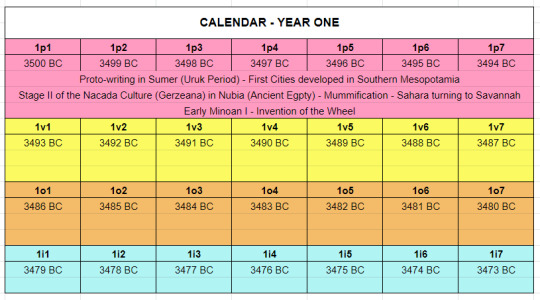
4.6 - As time goes by, build lots in your neighborhood and populate them with random Sims from the game (duly customized) or descendants of other families.
5 - Lots, Money and Bills
5.1 - At the start of Agricultural Age you can now build a rustic shelter. Suggestion: a simple square block with holes for ventilation or just a hole in the floor. Over time and as you earn money, you can add windows, thatched roofs and improve your shelter.
5.2 - At the beginning of Simvilization, money matters. From 1p1, you must zero your family/group money. To do this, have handiness level 10 and buy a sales table (The Sims 4 City Living, The Sims 4 Jungle Adventure or The Sims 4 Eco Lifestyle required). Now, press shift+c, enable testingcheats.true and type money 0.
5.3 - After purchasing the sales table, the Sim can no longer sell items from their inventory. You always need to sell the item to another Sim that your Sim can interact with (Yard Sale).
5.4 - To sell items in construction mode, you need to have a store (requires The Sims 4 Get to Work). Unless you know an easier way to sell these items to Sims your Sim interacts with.
5.5 - You cannot sell your harvest. Just pick the fruits and vegetables for your own consumption and sell some through the sales desk.
5.6 - You can ignore bills, always paying and discounting the amount through cheats, as if you had never paid bills. Look at the family/group simoleons before paying the bill. Pay the bill. Press shift+c, enable testingcheats.true and type money observed value. The amount paid on the accounts will be added.
5.7 - The lot you live on does not belong to you, it has no land value. You simply found unclaimed land and built on it. This means that when you leave, you must deduct its value from your initial money. In the same way, when changing lots, you don't have to pay for it. Press shift + c, enable testingcheats.true and use the command FreeRealEstate on.
5.8 - Own the “Off the Grid” and “Simple Living” lot challenges (Simple Living requires The Sims 4 Cottage Living). Again, you can only remove “Off the Grid” if you use a custom content stove because the game interprets the stove as electric. Therefore, prefer barbecue grills.
The rules below apply to Mesopotamia, not Europe:
5.9 - Polemic - You can create a lot that will serve as a house of pleasures. This lot can have a bar, dance floor and music. Female Sims who don't have a husband and the means to support themselves can be dancers and join "the oldest profession in the world". These types of environments cannot be frequented by married women and daughters of patriarchs. The women of the pleasure houses also cannot live with other women from outside, they are unfortunately not well socially accepted. (This case is not sacred prostitution allegedly practiced by Sumerian priestesses in temples.)
5.10 - You can create an Astro-religion temple. The Gods are based on the constellations and forces of nature: Sun God, Moon Goddess, Thunder God, and The Watcher from The Sims Medieval.
5.11 - Other lots allowed as the Simvilization progresses are restaurant (requires The Sims 4 Dine Out game pack), market community lot (requires The Sims 4 Eco Lifestyle) and stores (requires The Sims 4 Get to Work), duly customized.
6 - Build Mode Objects and Custom Content
6.1 - All stone and skin items from the past Age are allowed.
6.2 - You can use the woodwork table to craft objects. Destroy in-game items and exchange for custom content items, then these items will be free (you can add your value to the family/group money through cheats). Prefer rustic objects at the beginning (tree benches, for example), but objects with metallic connections (nails) are allowed at the EarlySimvilization.
6.3 - To have a bathtub you need to create it on the woodwork table. Delete it from the game (since you can't sell it in construction mode) and replace it with a more suitable CC.
6.4 - You can have a grill and stove with custom contents.
6.5 - Refrigerators to preserve food are still not allowed. You can have one just for cooking because the game requires it. You can only store fruits and meat (mod olde cookbook v.0.3) as if they were dried fruits and salted meat. Uneaten food must sit out of the refrigerator and spoil (except in winter in places where it snows).
6.6 - Scatter Lump of Clay around the lot to pretend Sims are molding pottery. You can discount the value of the Lumps through cheats and sell them on the sculpture model at the sales table. Mud is free, ready-made pottery is worth something.
6.7 - The Sim can have a loom.

7 - Create a Sim Items
7.1 - Fur clothes with leather or metallic parts are now allowed.
7.2 - The snowtato loom is a computer in disguise. You can increase writing skill with it. As you level up in writing, you can change your skins for clothes that appear to be woven or made of wool and cotton. One piece per level.
7.3 - In some warmer regions, women can only wear skirts with their breasts uncovered and, over time, cover them up more. Despite that Sims can no longer walk naked, or shower in the rain near other Sims.

Leaves or Skins? - only consider the first few minutes of video, not the most elaborate outfits.
7.4 - Transition from disheveled hair to neater hair or hairstyles.
7.5- Transition from mandatory to optional body hair for women.
7.6 - Men should still have a beard, except for beardless teenagers or future Egyptians.
8 - Birthdays, Life Expectancy, Deaths and Illnesses
Living in Simvilization made life easier for the Sims, but not so much. No more the devastating danger of starvation, animal attack or homelessness, but now there are plagues, attacks by bandits or other rival cities and the misery of wars and social inequality. Of course, there are always good Sims out there to help those in need, just as much as there are evil ones. Life expectancy has improved compared to prehistory, but remains aggressive.
At Early Simvilization you must change the life stage duration in the MC Command Center settings, based on the life expectancy below:

8.1 - From day 1p1 of the Calendar, make the modification bellow considering normal and short life time (MCC cannot modify the short life time, if you want to play in the short life time, you must play in normal mode with the change indicated for short):
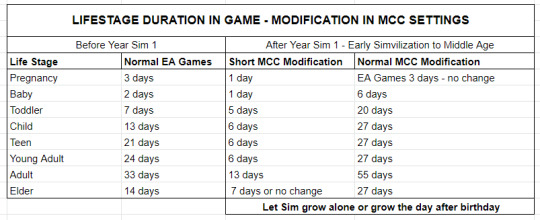
8.2 - Always grow the Sim one day after his birthday or let him grow alone (you can remove the forgotten birthday buffs with cheat). Thus, all Sims in the world grow equally, because EA's default is to delay growth by one day.
8.3 - The elder life stage can be left as default, 27 days on normal, or you can simply roll a die to decide how many days your Sim can live.
8.4 - From 1p1, when your Sim grows up, replace the Prehistory dice roll with the dice roll in the table below:
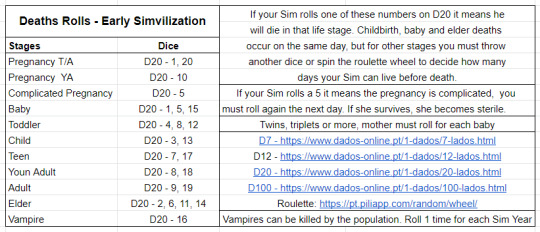
8.5 - If you roll one of the dice from the table above, it means that your Sim will die at this stage of life. Deaths in childbirth, newborns and the elderly occur on the same day. For the other stages, roll the dice again or spin the roulette wheel with the number of days that the respective stage lasts to find out on which day the Sim will die. That way Sims don't always die on the same day.
8.6 - If you use a mod that adds disease to the game, you can choose to roll the dice only when your Sim gets sick, instead of inventing deaths.
8.7 - For pregnancies with twins, triplets or more, the mother must roll the dice for each baby.
8.8 - Newborns can survive when their mothers die in childbirth (even twins), if you have a domestic animal that generates milk or a pregnant woman or with a child of nursing age (baby and toddler) nearby.
8.9 - If the pregnant woman gets a 5, it means that it was a complicated pregnancy and she is very sick. Roll the dice again the next day. If she survives, she will be sterile. Check the option in the CAS so that the Sim can no longer have children.
8.10 - If you ignore the rule 8.9 and the Sim becomes pregnant again, it is a death sentence. At the time of birth she will surely die.
8.11 - A sorcerer can save your Sim from death (requires The Sims 4 Realm of Magic). With a sorcerer on your lot (belonging to the family group/or not) you can beg for your Sim's life to Mistress Death or roll the dice again, taking a good number, the previous die is nullified and your Sim survives.
8.12 - Sorcerers can also cure infertility. Visit or invite a sorcerer to your lot. Get any potion from the reward shop. Pay 1000 simoleons for the potion (as if you bought it from the sorcerer) and you can lift the CAS restriction and "try for a baby" once. Do not abuse this rule.
9 - Attacks by Bandits or Other Peoples, Natural Disasters, Crop Losses and Diseases
It is assumed that with the sedentary lifestyle and the accumulation of food and products, groups of looters also emerged. Bandit attacks can occur by decreasing your game's Sim population. Life in cities without modern hygiene habits and living with animals also facilitate the transmission of diseases. Your Sim doesn't yet live in beautifully finished homes, fully protected from nature. Natural disasters such as landslides, floods, severe storms, heat waves, etc. may occur. At least one of these events must happen at some point in this Age.
9.1 - If a bandit attack happens, roll the dice or heads and tails for each Sim in your world. Sims can be killed or taken as slaves (mostly women and children).
9.2 - If your Sims are taken as slaves, you can choose to delete them or move them to another world, continuing their descent away from the main family/group.
9.3 - When bandits attack you also lose your plantation and part of your money. Roll a D100 to find out what percentage of money you should withdraw from your account. Taking 1 is 1%, 10 is 10%, 50 is half and 100 is total loss.
9.4 - In case of a disease outbreak, roll the dice or flip heads or tails for each Sim in your world, deciding who lives and who dies.
9.5 - The Sims 4 Seasons: Strong storms or excessive heat can make you lose your plantation and consequently your harvest. Roll a D100 to find out the percentage of the loss.
10 - Animals
I tried researching the oldest dog races and this is what I found, though not from reliable sources, but from articles on the internet:
Basenji (this breed is supposed to have emigrated from Africa and was represented through cave paintings in Libya 6000 years ago), Akita-Inu (its ancestor Matagi-Inu existed from 8000 BC to 200 BC), Alaskan Malamute (bred by the Mahlemut tribe 2000 or 3000 years ago), Saluki (dates back to 329 BC in Egypt, it is believed that it was used by tribes of nomadic hunters for its strength, endurance and agility), Siberian Husky (followed the Chukchi tribe in the region of Siberia), Samoyed (used to pull sleds and hunt by the Samoyed people of northwestern Siberia), Shar-Pei (hunter of wild boar and protector of livestock) and Chow-Chow (its name Songshi-Quan means "bellied lion dog". Pictured on a bas-relief from the Han Dynasty (150 BC -200 BC)). Of these, only the Basenji would have been common in the Mesopotamia region and excepting the Saluki, the other dogs belong to peoples with oriental physical characteristics such as almond-shaped eyes and straight black hair.

Basenji - Origin and Migration.
10.1 - You can have a dog that looks like a wolf or another wild animal (requires The Sims 4 Cats & Dogs).
10.2 - You can have a Basenji dog in Oasis Springs or Sulani.
10.3 - You can have a dog that looks like Akita, Samoyeda or Siberian Husky if your ethnicity is oriental.
10.4 - Prehistory rules continue. If your pet gets sick, wait a day and roll the D20 dice for it. On a roll of 5 or more, it must survive and acquire resistance to that disease. Watch the symptoms and the next time it has the same illness he won't need to roll the dice. You can press shift+left mouse button and restart it to remove the disease.
10.5 - Even in Simvilization, the sick animal cannot go to the vet, but if you have a socery on your lot (requires The Sims 4 Realm of Magic), he can cure the animal. Roll the die again, rolling 5 or more, your pet is healed even if you rolled a negative dice the previous round.
11 - Occults
11.1 - If you have The Sims 4 Realm of Magic game pack, you can create a sorcerer Sim to be a temple priest, or even considered a God. Socerys can also heal people, sell potions through the table sale, and trade skills (magic item repairs) for Simoleons. A fridge that looks like a wooden cabinet with bad contact in a time when there was no electricity and a stone bathtub leaking water seem like items taken by evil spirits, don't they? Add 50 simoleons every time you fix a broken item in someone's house.
11.2 - If you have The Sims 4 Get to Work expansion pack, you can have an Alien and consider him to be an Anunnaki, an ancient alien. I particularly think they match the paintings of the Egyptian god Osiris. But the gods were astronauts?

11.3 - The myth of the Vampire was present in Sumeria through Lamashtu. If you have The Sims 4 Vampires game pack and fishing the Vampire Squid or Batfish in the Oasis Springs secret lot, you can come into contact with the vampirism virus and become a vampire. Use cheats to do this, or create a vampire to transform your Sim as if the fish had bitten him. You can delete the vampire later.
11.4 - Tiamat was also the mother of sea monsters, or perhaps mermaids (requires The Sims 4 Island Living).
12 - The Simvilization
If you've made it this far, your legacy Sim is already level 10 in Fishing, Gardening, and Handiness. You already have a calendar, a shelter, and a neighborhood. His life expectancy improved a little bit. Congratulations, now your Sim's challenge will no longer be taking a shower in the rain at the risk of being hit by lightning and needing to fish to roast a fish over the fire and not starve to death. His new goal is to earn money so he can build a successful legacy. Trust me, making money without being able to sell through Sim inventory and build mode is hard.
12.1 - The aspirations for this stage are Fabulously Wealthy and Successfull Lineage, you can alternate between them.
12.2 - Male Sims can have fisher and gardener careers.
12.3 - You must complete a base game crystal collection if you live in Oasis Springs and a shell collection (requires The Sims 4 Island Living) if you live in Sulani. Or both if you want to travel between worlds as a merchant.
12.4 - Complete the Rosebud achievement, while you upgrade your outfits and main lot.
13 - Expansions, Game Packs and Stuff Packs:
13.1 - The Sims 4 Seasons (essential). Organize Sim Calendar.
13.2 - The Sims 4 Cottage Living (optional). “Simple life” lot challenge and farm animals.
13.3 - The Sims 4 City Living (optional/essential). Have a street vendor table.
13.4 - The Sims 4 Eco Lifestyle (optional/essential). Have a community market lot, sales table and insect farm.
13.5 - The Sims 4 Island Living (optional). Live in Sulani (equivalent to the Fertile Crescent) and have a mermaid.
13.6 - The Sims 4 Get to Work (optional). Having an Alien and store.
13.7 - The Sims 4 Jungle Adventure (essential if you don't have The Sims 4 City Living or The Sims 4 Eco Lifestyle). Have a street vendor table.
13.8 - The Sims 4 Realm of Magic (optional). Having a sorcerer to be a priest of the Astro-religion.
13.9 - The Sims 4 Vampires (optional). Having a Vampire.
13.10 - The Sims 4 Dine Out (optional). Have a restaurant.
14 - MCC settings:
14.1 - Enable marriages between men and women and more than one spouse.
14.2 - Women marry in adolescence, men at any age from adolescence.
14.3 - Female Elder Sims are not eligible to have children. Male Elder sims yes.
14.4 - There should be a higher percentage of pregnancies in the teenage and young adult stages compared to adulthood.
14.5 - Enable parenting skill for teenagers.
14.6 - Enable children can take care of babies.
14.7 - Increase the number of children per family/group from 3 to 6.
14.8 - Change the duration of lifespan from Sim Year 1: Newborns 6 days, Infants 20 days, Children, Adolescents and Young Adults, 27 days each, Adults, 55 days and Elders 27 days.
15 - Recommended mods:
- MC Command Center by Deaderpool - Manages various game resources.
-Timeless by Pandora - Removes some post-1900 modern items. Appropriate for Victorian Era historical saves.
- Tool v.2.6 by Twisted Mexi - Add and edit objects in the world.
-Sulani Hiders by Simplified Modding - Hides modern items in Sulani.
- Invisible Crib (default) by Severinka - hide the cradle.
-Miscarriage Chance by LittleMsSam’s or Miscarriage & Pregnancy Loss Pregnancy Overhaul Module - There is a chance the female Sim will experience cramps and miscarriage.
- Personalized content consistent with the Era. You can check the list of CPs I found at CC Links LHC Directory in my home page (I'm always updating).
#the sims 4#sims 4#ts4 legacy history challenge#legacy history challenge#legacy challenge#history challenge
23 notes
·
View notes
Text
They've turned the star of David into the new swastika.
They've cut down the olive trees.
In the deafening silence of our nation I thought,
No wonder our last Arabic linguist wants to quit.
Do prayers work anymore?
For they have poured out from my soul.
I don't know who to send them to,
I question if there is a soul.
By the Tigris and Euphrates,
Was the fabled Garden of Eden,
Yet the Golden Gates of Babylon,
Has been stolen by a German.
The land once ruled by the Queen of Sheba,
Covers women head to toe.
Do you think of her while you drink coffee,
Do you think of her while you commit crimes.
4 notes
·
View notes
Text
“Arab traditions record that the Adites, sprung from the blood of Ham, were the first inhabitants of Yemen, Hadramaut, and the countries of Mahrah and Oman”
“This statement fully agrees with the 10th chapter of Genesis, in which we find a considerable portion of the descendants of Cush inhabiting this region, where also modern science has discovered unmistakable traces of the Cushites”
The sons of Cush are Nimrod, Seba, Havilah, Sabtah, Raamah and Sabteca…
“There can be no doubt as to the name Seba; all classical writers give it to the inhabitants of Yemen”
SOURCE;
(The student's manual of oriental history. A manual of the ancient history of the East to the commencement of the Median wars Volume 2; 1870)
“Now it is supposed by many people that Ethiopia was only the country of that name in Africa. But in Gen. ii. Ethiopia, or Cush, is said to be encompassed by one of the four rivers which branched off from each other at the site of the Garden of Eden, one of which was the Euphrates and another the Tigris”
“The Ethiopia there referred to must, therefore, have been in Asia, and as shown by the author of the article "Eden” in Smith's Dictionary of the Bible, included Arabia and also Susiana, or Chusistan, to the east of the Euphrates, which, as its name implies, was also the land of Cush”
“The names, "Havilah” and "Seba" two of the sons of Cush, and "Dedan," his grandson, were the names respectively of portions of Northern, Southern and Eastern Arabia implying therefore that Arabia was the first home of the Cushite race.”
“These ancient Cushites of the Arabian peninsula originally consisted of twelve tribes—Ad, Thamoud (probably so named after Thamus or Tammuz), Tasm, Djadis, Amlik (Amalek), Oumayim, Abil, Djourhoum, Wabar, Jasm, Antem and Hashem.”
“From this it would appear that the Amalekites who occupied the country to the extreme north of Arabia and the south of Palestine were of this race.”
“It would therefore appear that the Aribah or Adites, the ancient inhabitants of the Arabian peninsula, previous to the arrival of the Semitic Arabs, were the Cushite founders of the first Babylonian Empire; and that Arabia, lying midway between African and Asiatic -Ethiopia, was the first home of the Cushite race.”
SOURCE;
(John Garnier, “The Worship of the Dead, Or, The Origin and Nature of Pagan Idolatry and Its Bearing Upon the Early History of Egypt and Babylonia”; 1904)
“For some reason, the Cushites in Babylon, all at once swarmed out all over the earth”
“The historian Ridpath says, “We don’t know what caused the Hamites to leave Chaldea”
“The Bible account of the confusion of tongues gives a definite reason for the dispersion”
“Going east, these Cushite tribes overran the Semites in Elam, then continued on their eastern trek”
“Under the name of Dravidian they settled all along the coast of India and Ceylon”
“When pushed on by the later Aryans, they peopled the islands of the Pacific”
“A branch of these Cushites from Chaldea became the Mongols who peopled China and Japan and later crossed over into America and became American Indians”
SOURCE;
(Early Creationist Journals; 2021)
Haplogroup Q is the predominant Y-DNA haplogroup among modern Native Americans…
Haplogroup P is the direct paternal ancestor of haplogroup Q…
Haplogroup P is primarily found in indigenous populations of Melanesia, Southeast Asia, and parts of Oceania…
“The earliest South Americans tend to be more similar to present Australians, Melanesians, and Sub-Saharan Africans
SOURCE;
(https://www.ncbi.nlm.nih.gov/pmc/articles/PMC1317934/)
“The northeast Asian affinities of present-day Native Americans CONTRAST with a DISTINTIVE morphology seen in some of the EARLIEST American skeletons, which share traits with present-day Australasians (indigenous groups in Australia, Melanesia, and island Southeast Asia)
SOURCE;
(https://www.ncbi.nlm.nih.gov/pmc/articles/PMC4982469/)
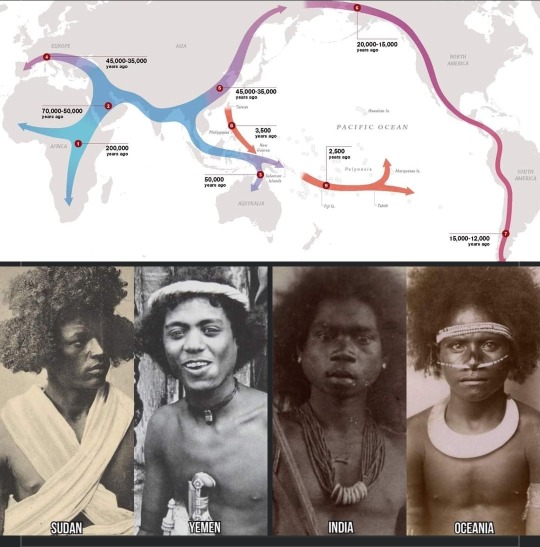
4 notes
·
View notes
Text

Where Was the Garden of Eden Located? by Ken Ham
Most Bible commentaries state that the site of the garden of Eden was in the Middle East, but what does Scripture actually tell us? Exactly where was the garden of Eden? Many times we just believe something because someone told us or we read it somewhere. But as Christians, we should always be reminded to be like the Bereans described in the book of Acts:
“Now these [Berean] Jews were more noble than those in Thessalonica; they received the word with all eagerness, examining the Scriptures daily to see if these things were so” (Acts 17:11).
Now most Bible commentaries state that the site of the garden of Eden was in the Middle East, situated somewhere near where the Tigris and Euphrates Rivers are today. This is based on the description given in Genesis 2:8–14:
“The Lord God planted a garden eastward in Eden. . . . Now a river went out of Eden to water the garden, and from there it parted and became four riverheads. The name of the first is Pishon . . . . The name of the second river is Gihon. . . . The name of the third river is Hiddekel [Tigris]. ;. . . The fourth river is the Euphrates.”
Even the great theologian John Calvin struggled over the exact location of the garden of Eden. In his commentary on Genesis he states:
“Moses says that one river flowed to water the garden, which afterwards would divide itself into four heads. It is sufficiently agreed among all, that two of these heads are the Euphrates and the Tigris; for no one disputes that . . . (Hiddekel) is the Tigris. But there is a great controversy respecting the other two. Many think that Pison and Gihon are the Ganges and the Nile; the error, however, of these men is abundantly refuted by the distance of the positions of these rivers. Persons are not wanting who fly across even to the Danube; as if indeed the habitation of one man stretched itself from the most remote part of Asia to the extremity of Europe. But since many other celebrated rivers flow by the region of which we are speaking, there is greater probability in the opinion of those who believe that two of these rivers are pointed out, although their names are now obsolete. Be this as it may, the difficulty is not yet solved. For Moses divides the one river which flowed by the garden into four heads. Yet it appears, that the fountains of the Euphrates and the Tigris were far distant from each other.”
Calvin recognized that the description given in Genesis 2 concerning the location of the garden of Eden does not fit with what is observed regarding the present Tigris and Euphrates Rivers. God’s Word makes it clear that the garden of Eden was located where there were four rivers coming from one head. No matter how one tries to fit this location in the Middle East today, it just can’t be done.
Interestingly, Calvin goes on to say:
“From this difficulty, some would free themselves by saying that the surface of the globe may have been changed by the deluge. . . .”
This is a major consideration that needs to be taken into account. The worldwide, catastrophic flood of Noah’s day would have destroyed the surface of the earth. If most of the sedimentary strata over the earth’s surface (many thousands of feet thick in places) is the result of this global catastrophe as creationists believe, then we would have no idea where the garden of Eden was originally located—the earth’s surface totally changed as a result of the flood.
Not only this, but underneath the region where the present Tigris and Euphrates Rivers are located, there exists hundreds of feet of sedimentary strata—a significant amount of which is fossiliferous. Such fossil-bearing strata had to be laid down at the time of the flood.
Also creationists believe there was one major continent before the flood which was totally changed by various processes during and after the flood. The continents today bear little or no resemblance to what existed before the flood.
Therefore, no one can logically suggest that the area where the present Tigris and Euphrates Rivers are today is the location of the garden of Eden, for this area is sitting on flood strata containing billions of dead things (fossils). The perfect garden of Eden can’t be sitting on billions of dead things before sin entered the world!
This being the case, the question then is, why are there rivers named Tigris and Euphrates in the Middle East today? In my native country of Australia, one will recognize many names that are also used in England (e.g., Newcastle). The reason is that when the settlers came out from England to Australia, they used names they were familiar with in England to name new places/towns in Australia.
Another example is the names given to many rivers in the United States. There is the Thames River in Connecticut, the Severn River in Maryland, and the Trent River in North Carolina—all named for prominent rivers in the UK.
In a similar way, when Noah and his family came out of the ark after it landed in the area we today call the Middle East (the region of the Mountains of Ararat), it would not have been surprising for them to use names they were familiar with from the pre-Flood world (e.g., Tigris and Euphrates), to name places and rivers, etc., in the world after the flood.
Ultimately, we don’t know where the garden of Eden was located. To insist that the garden was located in the area around the present Tigris and Euphrates Rivers is to deny the catastrophic effects of the global flood of Noah’s day, and to allow for death before sin. That’s why I believe this question is important. We live at a time where secularists deny a global flood, and sadly many Christians have relegated Noah’s flood to some local event because they’ve been impacted by the belief in millions of years.
Yes, let's be Bereans, not just for where the garden of Eden was located, but with everything we believe. Let’s make sure we test our beliefs against the absolute authority of the Word of God!
2 notes
·
View notes
Text









A river watering the garden flowed from Eden; from there it was separated into four headwaters. The name of the first is the Pishon; it winds through the entire land of Havilah, where there is gold. (The gold of that land is good; aromatic resin and onyx are also there.) The name of the second river is the Gihon; it winds through the entire land of Cush. The name of the third river is the Tigris; it runs along the east side of Ashur. And the fourth river is the Euphrates.
#bible#bible verse#god#art#digital art#ai#ai art#ai generated#artificial intelligence#midjourney#midjourney ai#midjourney art#river#garden of eden
5 notes
·
View notes
Text
BIBLE TIME
Genesis 2
The Seventh Day, God Rests
2 Thus the heavens and the earth were finished, and all the host of them. 2 And on the seventh day God finished his work that he had done, and he rested on the seventh day from all his work that he had done. 3 So God blessed the seventh day and made it holy, because on it God rested from all his work that he had done in creation.
The Creation of Man and Woman
4 These are the generations of the heavens and the earth when they were created, in the day that the Lord God made the earth and the heavens.
5 When no bush of the field was yet in the land and no small plant of the field had yet sprung up—for the Lord God had not caused it to rain on the land, and there was no man to work the ground, 6 and a mist was going up from the land and was watering the whole face of the ground— 7 then the Lord God formed the man of dust from the ground and breathed into his nostrils the breath of life, and the man became a living creature. 8 And the Lord God planted a garden in Eden, in the east, and there he put the man whom he had formed. 9 And out of the ground the Lord God made to spring up every tree that is pleasant to the sight and good for food. The tree of life was in the midst of the garden, and the tree of the knowledge of good and evil.
10 A river flowed out of Eden to water the garden, and there it divided and became four rivers. 11 The name of the first is the Pishon. It is the one that flowed around the whole land of Havilah, where there is gold. 12 And the gold of that land is good; bdellium and onyx stone are there. 13 The name of the second river is the Gihon. It is the one that flowed around the whole land of Cush. 14 And the name of the third river is the Tigris, which flows east of Assyria. And the fourth river is the Euphrates.
15 The Lord God took the man and put him in the garden of Eden to work it and keep it. 16 And the Lord God commanded the man, saying, “You may surely eat of every tree of the garden, 17 but of the tree of the knowledge of good and evil you shall not eat, for in the day that you eat of it you shall surely die.”
18 Then the Lord God said, “It is not good that the man should be alone; I will make him a helper fit for him.” 19 Now out of the ground the Lord God had formed every beast of the field and every bird of the heavens and brought them to the man to see what he would call them. And whatever the man called every living creature, that was its name. 20 The man gave names to all livestock and to the birds of the heavens and to every beast of the field. But for Adam there was not found a helper fit for him. 21 So the Lord God caused a deep sleep to fall upon the man, and while he slept took one of his ribs and closed up its place with flesh. 22 And the rib that the Lord God had taken from the man he made into a woman and brought her to the man. 23 Then the man said,
“This at last is bone of my bones and flesh of my flesh; she shall be called Woman, because she was taken out of Man.”
24 Therefore a man shall leave his father and his mother and hold fast to his wife, and they shall become one flesh. 25 And the man and his wife were both naked and were not ashamed.
Bible Time-Genesis 2 Diane Beauford
0 notes
Text
A link to my personal reading of the Scriptures
for the 7th of november 2024 with a paired chapter from each Testament (the First & the New Covenant) of the Bible
[The Book of Luke, Chapter 2 • The Book of 1st Samuel, Chapter 14]
along with Today’s reading from the ancient books of Proverbs and Psalms with Proverbs 7 and Psalm 7 coinciding with the day of the month, accompanied by Psalm 47 for the 47th day of Astronomical Autumn, and Psalm 12 for day 312 of the year (with the consummate book of 150 Psalms in its 3rd revolution this year)
A post by John Parsons:
The “Tree of Life,” etz ha’chayim (עֵץ הָחַיִּים), is mentioned ten times in the Scriptures. It first appears in the Torah as the center of the paradise of Eden (Gen. 2:9; 3:22-4), but it is soon lost to humanity because of Adam’s transgression. In the book of Revelation, it reappears in the center of the Paradise of God (Rev. 2:7, 22:2), resurrected on account of the faithful obedience of Yeshua as mankind’s “last Adam” (1 Cor. 15:45). Those who have washed their robes by means of His righteousness are given access to this Tree in the heavenly Jerusalem (Rev. 22:14). The paradise lost by Adam has been regained by the greater ben-adam, Son of man, Yeshua the Messiah.
In the book of Proverbs, the Tree of Life is a metaphor for the life of wisdom (chokhmah), which is the implied subject of our verse above (see Prov. 3:13). Traditional Judaism identifies talmud Torah (the study of Torah) as the Tree of Life, promising wisdom to those who “lay hold of her” (a Torah scroll has wooden rods called atzei chayim – the “trees of life” – used to roll the parchment). According to the Rabbis, the eternal life that was lost in Eden was restored to humanity with the giving of the Torah at Sinai.
A midrash says that in the paradise of olam haba (the world to come) there stands the Tree of Life, with the tree of knowledge forming a hedge around it. Only the wise one who has cleared a path for himself through the tree of knowledge can come close to it (which is said to be so enormous that it would take 500 years to walk around it). Beneath the Tree flows forth the water that irrigates the whole earth, parting into four streams, the Ganges, the Nile, the Tigris and the Euphrates rivers. In mystical (i.e., gnostic) Judaism, the Tree of Life is depicted as an elaborate symbol, the meditation of which is said to “clear the path” back to paradise.
Followers of Yeshua understand that He (alone) is the Tree of Life, the Center of the true Paradise of God (Rev. 22:2). He is the Seed, Root, Trunk, Branches, and Fruit that comes from heaven. The first Adam lost access to God by means of his transgression (eating from the tree of the “knowledge of good and evil”), but the “Greater Adam” reclaimed our access by means of His obedience, resisting the power of evil even to the point of death upon the “tree” of the cross (Phil. 2:8). The resurrection of the life of Yeshua is the “firstfruits” of all who put their trust in Him (1 Cor. 15:20; Jas. 1:18). Yeshua is the “Tree of Life in the center of the Paradise of God,” and all who retain Him are forever blessed indeed. Say ye Amen.
[ Hebrew for Christians ]
========
Prov. 3:18 reading:
https://hebrew4christians.com/Blessings/Blessing_Cards/prov3-18-jjp.mp3
Hebrew page:
https://hebrew4christians.com/Blessings/Blessing_Cards/prov3-18-lesson.pdf

11.7.24 • Facebook
from Today’s email by Israel365
Today’s message (Days of Praise) from the Institute for Creation Research
0 notes
Text
Floating Houses of Iraq: The Mesopotamian Venice
The enchanting floating houses of Iraq, known as “mudhif,” tell a remarkable story of sustainability and resilience. Often referred to as the Garden of Eden or the Mesopotamian Venice, this unique community, known as the Ma’dan, thrives in the lush wetland areas of southern Iraq, where the Tigris and Euphrates rivers meet. The Craft of Floating Homes These floating homes date back thousands of…
#cultural heritage#cultural history#Eco Architecture#Floating Houses#Historic Curiosities#Iraq History#live in harmony with nature#Ma’dan#Marsh Arabs#Marshes#Mesopotamian Venice#Nature Conservation#Nomadic Lifestyle#Preserve Culture#Reed Houses#Sustainable Architecture#sustainable living#Traditional Housing#Water Based Living
0 notes
Text
Mesopotamia (from the Greek, meaning 'between two rivers') was an ancient region located in the eastern Mediterranean bounded in the northeast by the Zagros Mountains and in the southeast by the Arabian Plateau, corresponding to modern-day Iraq and parts of Iran, Syria, Kuwait, and Turkey and known as the Fertile Crescent and the cradle of civilization.
The 'two rivers' of the name refer to the Tigris and the Euphrates and the land was known as 'Al-Jazirah' (the island) to the Arabs as a fertile land surrounded by water. The term "Fertile Crescent" was coined by Egyptologist J.H. Breasted (l. 1865-1935) in 1916 to describe the region at the north-end of the Persian Gulf, associated with the biblical Garden of Eden.
Mesopotamia was the home of many different civilizations spanning thousands of years which contributed significantly to world culture and progress. Many of the aspects of daily life taken for granted in the present day, such as writing, the wheel, a code of laws, the sail, the concept of the 24-hour day, beer-brewing, civil rights, and irrigation of crops all were first developed in the land between two rivers which was home to the great Mesopotamian civilizations.
#studyblr#history#prehistory#civilization#politics#sociology#technology#invention#languages#writing#fertile crescent#mesopotamia#sumer#iraq#iran#syria#kuwait#turkey#al-jazīrah#tigris-euphrates river system#tigris#euphrates#persian gulf#james henry breasted#arabic#cuneiform#sumerian cuneiform
0 notes
Text
Ancient Mesopotamian Religion: The Cradle of Beliefs and Cultures
Mesopotamia, often referred to as the “cradle of civilization,” was home to some of the world’s oldest civilizations, including the Sumerians, Akkadians, Assyrians, and Babylonians. These cultures developed not only significant technological and cultural advances, but also a rich and complex religious tradition that would influence later religions in many parts of the world.
Historical and Geographical Context
Situated between the Tigris and Euphrates rivers, in what is now Iraq and parts of Iran, Syria, and Turkey, Mesopotamia was the scene of great human innovations, including writing, mathematics, and astronomy. In this fertile and dynamic environment, religious beliefs played a central role in daily life, shaping both social and political life.
The Gods and Cosmology
Mesopotamian religion was polytheistic, with a vast pantheon of gods and goddesses who represented natural forces, aspects of everyday life, and abstract concepts. At the head of the pantheon was Anu, the sky god, considered the father of gods and men. Other major gods included Enlil, the god of wind and storms, and Enki, the god of water and wisdom.
Each city-state in Mesopotamia had its own patron god or goddess, who was considered the true ruler of the city, while the king acted as that god's earthly representative. For example, Uruk was dedicated to the goddess of love and war, Inanna (known as Ishtar in Akkadian), while Nippur was the sacred city of Enlil.
Mythology and Sacred Texts
Mesopotamian mythology is rich in narratives explaining the creation of the world, the origin of the gods, and the destiny of men. One of the best-known texts is the Enuma Elish, the Babylonian epic of creation, which describes how the god Marduk defeated the primordial chaos represented by the goddess Tiamat to create the world and establish order.
Another crucial text is the Epic of Gilgamesh, one of humanity’s oldest literary works. This epic chronicles the adventures of King Gilgamesh, including his quest for immortality, and reflects profound questions about life, death, and human legacy. The Epic of Gilgamesh also contains a version of the flood, similar to the narrative found later in the Bible’s Genesis.
Religious Rituals and Practices
The Mesopotamians performed a variety of rituals and ceremonies to honor their gods, ranging from animal sacrifices to complex religious festivals. One of the most important was the Akitu, the New Year festival, which was celebrated with great pomp and ceremony in several cities, especially Babylon. During the Akitu, the statue of the chief god was carried in procession, and rituals were performed to ensure the renewal of cosmic order and the prosperity of the city.
Temples, known as ziggurats, were the center of religious and social life. These enormous stepped structures served as places of worship and as the earthly home of the gods. Priests played a crucial role in mediating between the gods and humans, interpreting divine signs, conducting rituals, and maintaining the temples.
The Legacy of Mesopotamian Religion
Although Mesopotamian religion disappeared with the decline of the Mesopotamian civilizations, its legacy endures. Many of its ideas, myths, and symbols were absorbed by later religions, especially the Abrahamic religions. The notion of a universal flood, the idea of a paradisiacal garden (like Eden), and themes of the struggle between good and evil can all trace their roots to Mesopotamian myths.
Mesopotamian influence can also be seen in Western astrology and religious practice. The zodiac, for example, has its origins in astrological systems developed by the Babylonians, who believed that the movements of the stars reflected the will of the gods.
Conclusion
Ancient Mesopotamian religion is a testament to the power of spirituality to shape cultures and civilizations. Although it was a religion specific to a time and place, its ideas and mythologies transcended its origins, leaving an indelible mark on human history. By exploring its narratives and practices, we can gain deeper insight into the beliefs and values that underpinned one of the most influential civilizations of the ancient world.
1 note
·
View note
Text
Genesis 2:14And the name of the third river is Hiddekel: that is it which goeth toward the east of Assyria. And the fourth river is Euphrates.This verse continues the description of the rivers flowing out of the Garden of Eden, mentioning the rivers Hiddekel (Tigris) and Euphrates. It highlights the geographical context of the ancient region surrounding Eden. Applying this verse involves recognizing God's meticulous creation and provision for humanity, including the diverse landscapes and resources He has provided. It challenges us to steward and appreciate the natural environment and cultural diversity that God has entrusted to us.
0 notes
Text
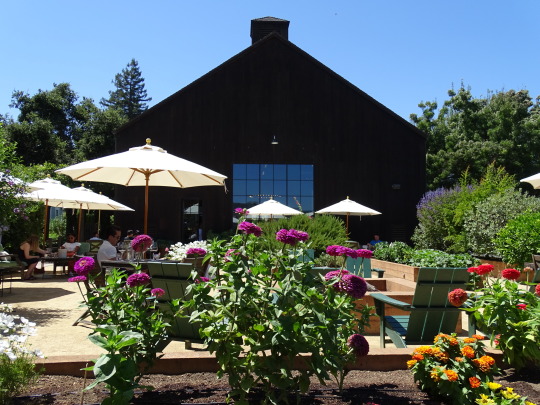
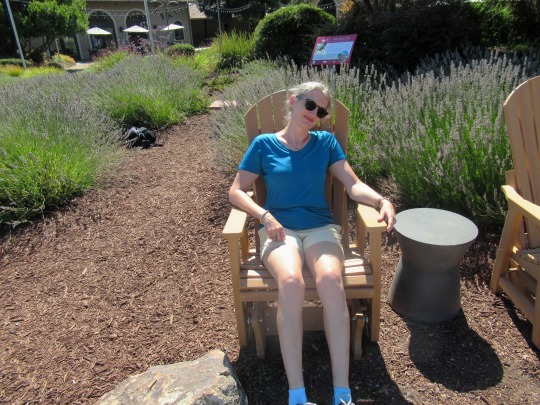
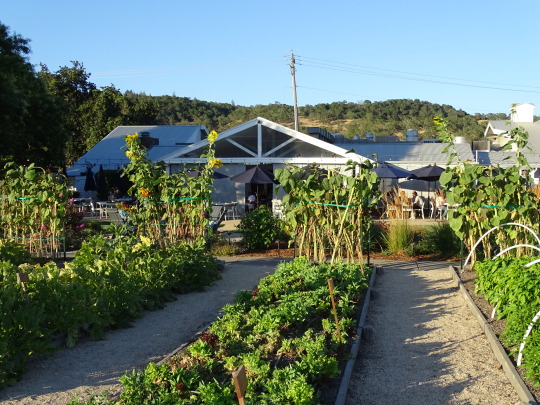
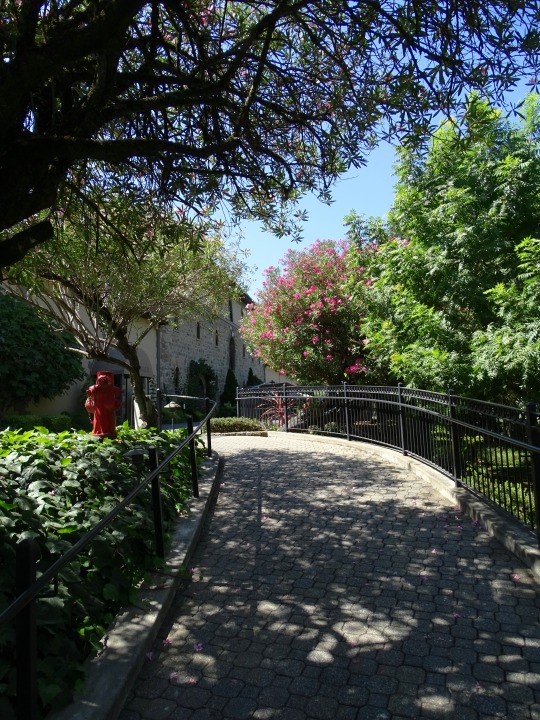
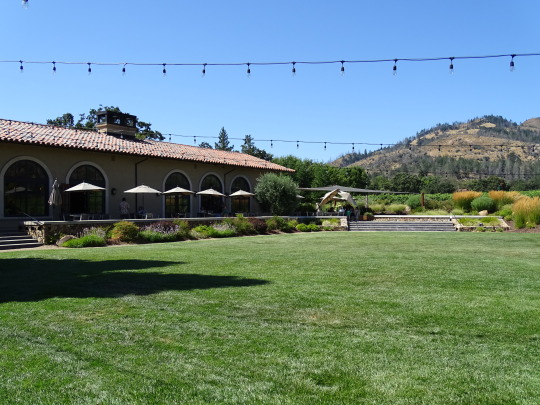
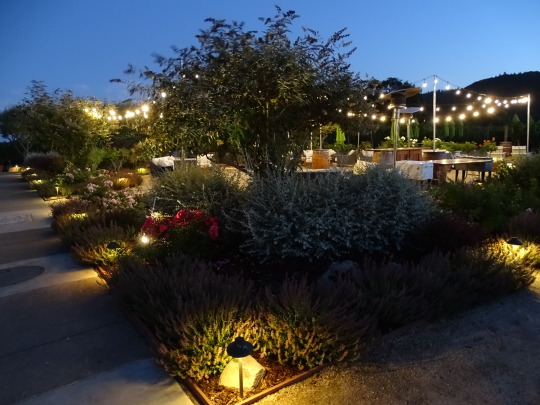
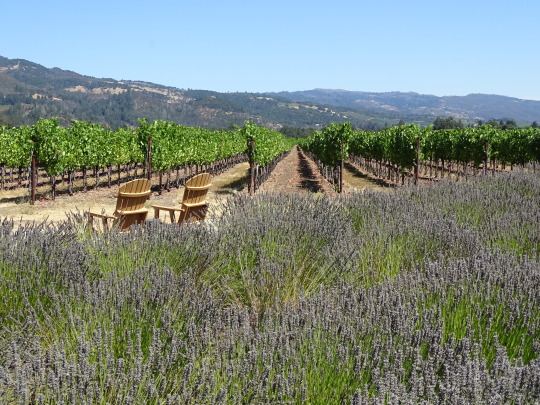
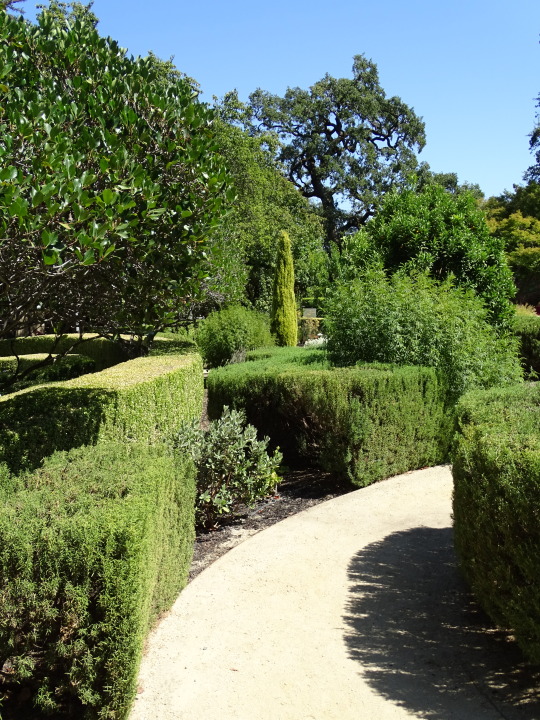
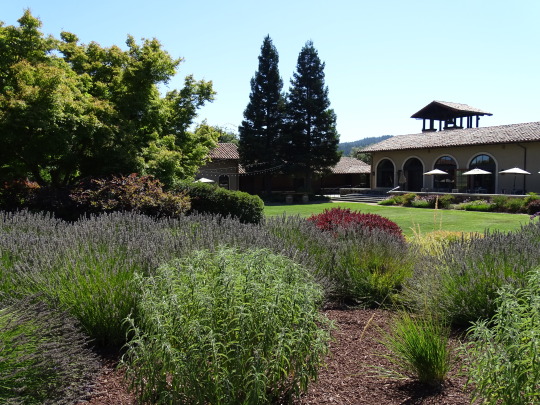
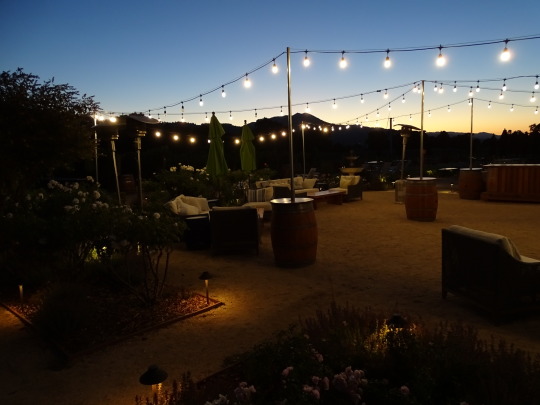
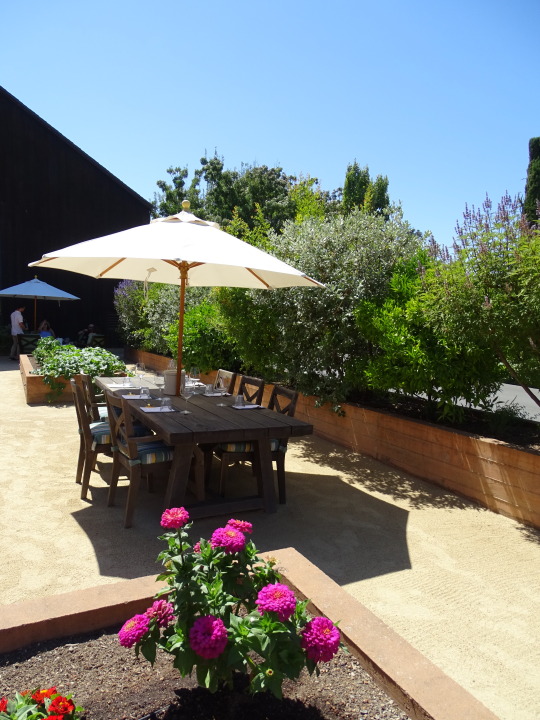
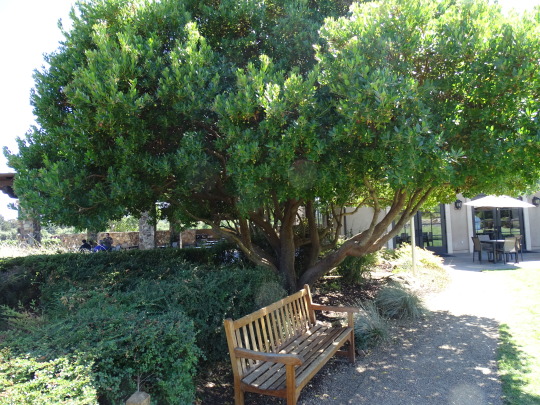
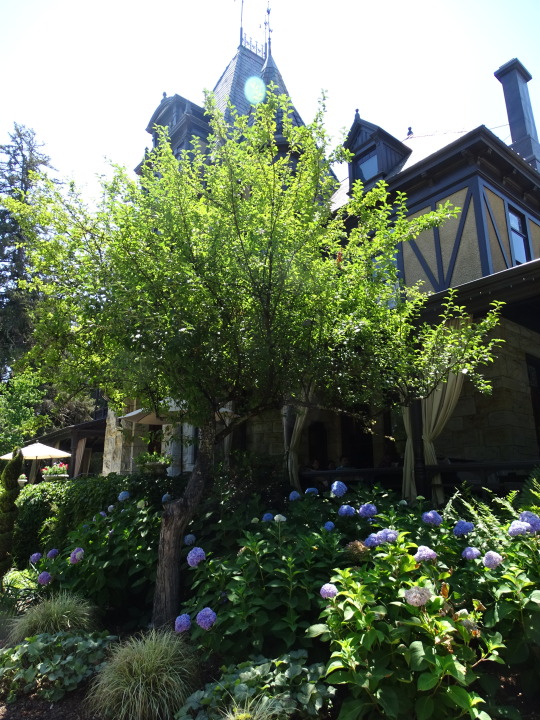
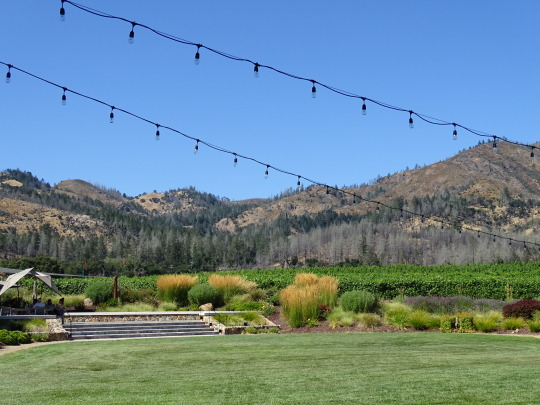
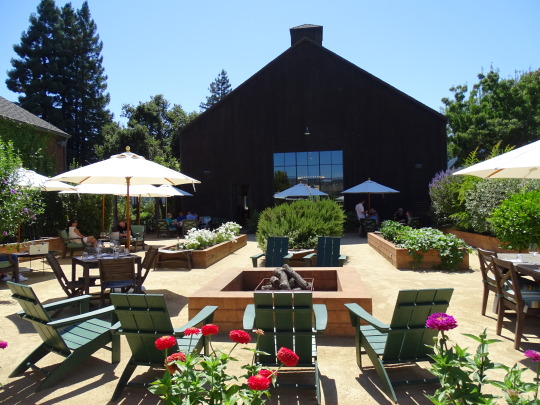

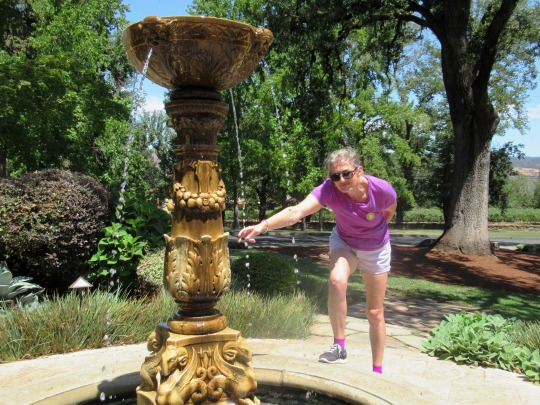
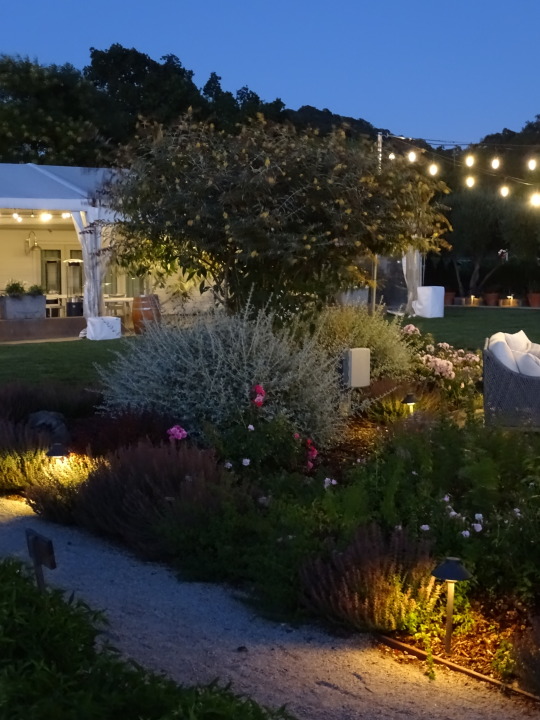
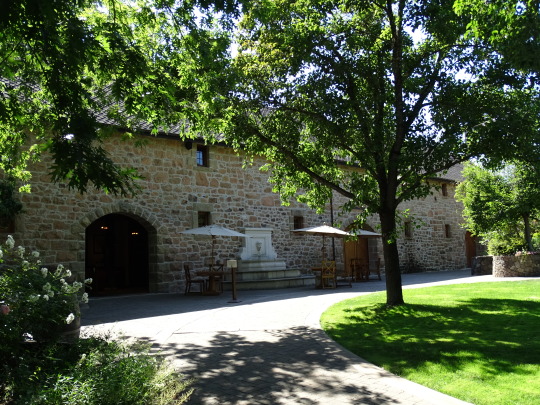
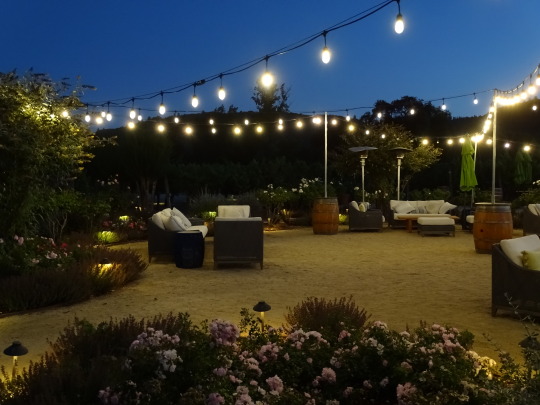
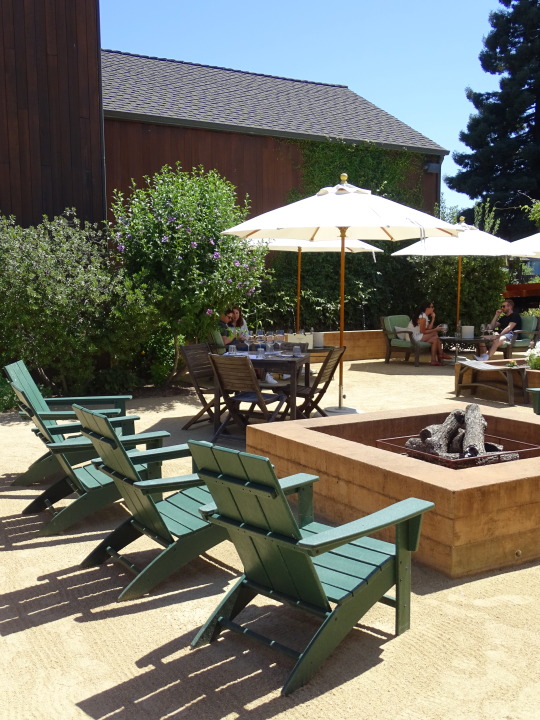
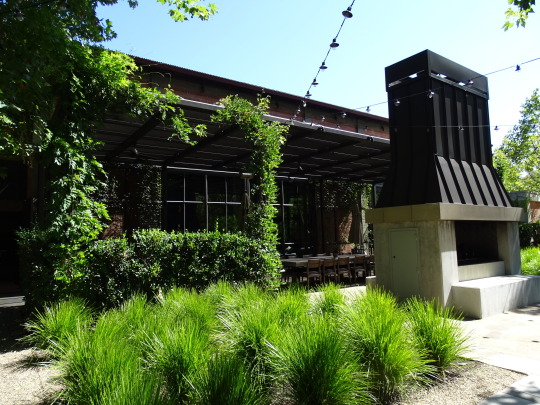
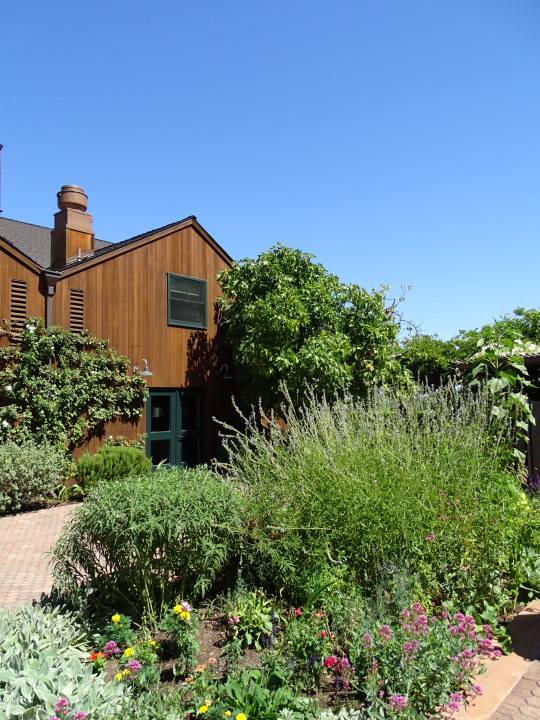
National Public Gardens Day
Get outside, get some fresh air, and literally stop and smell the roses by finding a public garden to stroll through and enjoy, by yourself or with those you love.
There are many different ways to define the word garden. Indeed, the term stretches to include everything from a small piece of land where flowers are grown to areas where we can plant fruit and veg. Similarly, gardens can be wide-open spaces that are filled with a large assortment of different plants. These public spaces are often the perfect spot to spend time with family and friends outside or enjoy some incredible entertainment. It’s not uncommon for public spaces to be used for outdoor theater and live music. These areas are known as public gardens.
Public gardens – the beautiful centerpieces to cities and large communities. Filled with different assortments of flora and fauna, they are the bright and colorful beacon in the middle of a large and dully-colored metropolis. They’re a reminder of the beauty that nature holds, a great place for picnics, and taking kids out for a play date. But where did the first public garden originate and when? Come with us as we delve into the past of National Public Gardens Day!
History of National Public Gardens Day
Mesopotamia, the “land between the rivers” Tigris and Euphrates, comprises a hilly and mountainous northern area and flat, alluvial south. Its peoples were urban and literate from about 3,000 BC.
Evidence for their gardens comes from written texts, pictorial sculpture, and archaeology. In western tradition, Mesopotamia was the location of the Garden of Eden and the Hanging Gardens of Babylon. Temple gardens developed from the representation of a sacred grove. Several distinct styles of the royal garden are also known.
The courtyard garden was enclosed by the walls of a palace. On a larger scale was a cultivated place inside the city walls. At Mari on the Middle Euphrates (c 1,800BC), one of the huge palace courtyards was called the Court of the Palms. It is crossed by raised walkways of baked brick; the king and his entourage would dine there.
At Ugarit (1,400BC) there was a stone water basin, not located centrally as in later Persian gardens, for the central feature was probably a tree (date palm or tamarisk). The 7th century BC Assyrian king Assurbanipal is shown on a sculpture feasting with his queen, reclining on a couch beneath an arbor of vines, and attended by musicians.
Trophies of conquest are on display, including the dismembered head of the king of Elam hanging from a fragrant pine branch! A Babylonian text from the same period is divided into sections as if showing beds of soil with the names of medicinal, vegetable, and herbal plants written into each square, perhaps representing a parterre design.
On a larger scale, royal hunting parks were established to hold the exotic animals and plants which the king had acquired on his foreign campaigns. King Tiglath Pileser I (1,000BC) lists horses, oxen, asses, deer, gazelle, and ibex, boasting “I numbered them like flocks of sheep.”
From around 1,000 BC the Assyrian kings developed a style of city gardening incorporating a naturalistic layout, running water supplied from river headwaters, and exotic plants from their foreign campaigns.
Assurnasirpal II (883-859BC) lists pines of different kinds, including cypresses, junipers, almonds, dates, ebony, rosewood, olive, oak, tamarisk, walnut, terebinth, ash, fir pomegranate, pear, quince, fig, and grapevines. “The canal water gushes from above into the gardens; fragrance pervades the walkways; streams of water as numerous as the stars of heaven flow in the pleasure garden…
Like a squirrel, I pick fruit in the garden of delights.” The city garden reached its zenith with the palace design of Sennacherib(704-681BC) whose water system stretched for 50 km into the hills. The garden was higher and more ornate than any other and he boasted of the complex technologies he deployed, calling his garden palace “a Wonder for all Peoples”.
While public gardens may have origins deep in the past, Public Garden Day is a fairly modern celebration. Celebrations began in 2009 and it was created as a way to both enjoy and celebrate these beautiful spaces. The day is also a time where there are campaigns to build awareness around these spaces and what they mean to the local community. As well as often being a prime location for public events, public gardens may also be an area for environmental conservation. As such, it’s common to find that on this day, there are campaigns to draw attention to this and ensure that both tourists and locals remember these locations.
Some people also view this day as the beginning of spring. This isn’t the official start of spring of course, but it does seem to be a time where more people go out and enjoy nature with their loved ones and people that they hold dear.
How to celebrate National Public Gardens Day
From roses to chrysanthemums, all we have to do is go outside to a public garden and admire the variety of flora. The beauty of nature is not one to take lightly. So, let’s get out there! Maybe we can even plant our own gardens to add some color to our homes.
The biblical Book of Genesis mentions the Tigris and Euphrates as two of the four rivers bounding the Garden of Eden. No specific place has been identified although there are many theories.
The Hanging Gardens of Babylon are listed by classical Greek writers as one of the Seven Wonders of The World. The excavated ruins of Babylon do not reveal any suitable evidence, which has led some scholars to suggest that they may have been purely legendary. Mesopotamia is believed to be the origin of the public garden and we’d have to say we don’t disagree.
Source
#National Public Gardens Day#NationalPublicGardensDay#second Friday of May#10 May 2024#original photography#Sonoma#Napa Valley#Brix Restaurant & Gardens#St. Helena#summer 2023#Beringer Vineyards#Freemark Abbey Winery#Louis M. Martini Winery#tourist attraction#landmark#countryside#flora#nature#California#West Coast#architecture#St. Francis Winery & Vineyards#USA#travel#vacation#landscape#cityscape#Turnbull Wine Cellars
1 note
·
View note